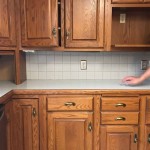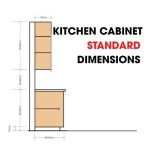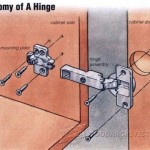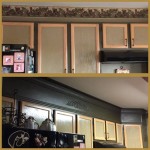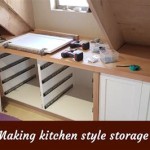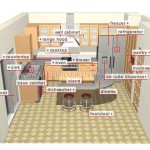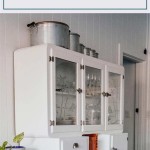How To Install Drawer Slides On Old Kitchen Cabinets
Replacing old, worn-out, or broken drawer slides in kitchen cabinets can significantly improve functionality and ease of use. This guide provides a comprehensive approach to installing new drawer slides, offering a step-by-step process for a successful upgrade.
Removing the Old Drawer Slides
The first step involves carefully removing the existing drawer slides. Different cabinet and drawer systems employ various mounting techniques. Understanding the current setup is crucial before proceeding.
1.
Empty the drawer:
Remove all contents from the drawer to avoid damage and reduce weight. 2.Locate mounting screws:
Examine the drawer sides and cabinet frame for screws securing the slides. These may be located on the bottom, sides, or underneath the drawer. 3.Remove the screws:
Use a screwdriver to carefully remove all screws attaching the slides to both the drawer and the cabinet frame. 4.Detach the drawer:
Once all screws are removed, gently pull the drawer out from the cabinet. Some slides have release mechanisms; if so, disengage them before pulling. 5.Separate slides from drawer:
Carefully separate the drawer slide components from the drawer and cabinet. Keep track of all screws and small parts for potential reuse or reference for new hardware.Choosing New Drawer Slides
Selecting appropriate replacement slides is essential for proper function and fit.
1.
Measure the drawer depth:
Accurately measure the drawer depth (from front to back). This measurement is critical to selecting the correct slide length. 2.Determine slide type:
Several types of drawer slides exist, including side-mount, under-mount, and center-mount. Choose the type that best suits the drawer construction and cabinet design or matches the previous slide type if possible. 3.Consider weight capacity:
Select slides with a weight capacity appropriate for the intended drawer contents. Heavier items require more robust slides. 4.Choose material and finish:
Determine the desired material for the slides (e.g., steel, zinc) and the finish (e.g., chrome, white) to ensure compatibility with the existing cabinetry.Preparing the Cabinets and Drawers
Before installing the new slides, it might be necessary to prepare the cabinets and drawers.
1.
Clean the mounting surfaces:
Remove any debris, old adhesive, or loose wood from the cabinet and drawer surfaces where the new slides will be mounted. 2.Fill old screw holes (if necessary):
If the new slides require different mounting holes, fill the old holes with wood filler and allow it to dry completely. Sand the filled areas smooth for a flush surface. 3.Pre-drill pilot holes (if necessary):
If the new slides require new screw holes, pre-drilling pilot holes can prevent wood from splitting during installation. Refer to the manufacturer's instructions for recommended pilot hole sizes.Installing the New Drawer Slides
Installation of new drawer slides requires precision and attention to detail to ensure smooth drawer operation.
1.
Attach cabinet members:
Position the cabinet member of the slide according to manufacturer's instructions, typically aligned with the front edge of the cabinet opening. Secure using the provided screws, ensuring proper alignment and depth. 2.Attach drawer members:
Position the drawer member of the slide onto the drawer sides, aligning them with the front edge and according to the manufacturer's instructions. Secure using the provided screws, ensuring proper alignment. 3.Test fit and adjust:
Carefully insert the drawer into the cabinet, ensuring it slides smoothly and fully extends. Adjust the slide position if necessary to achieve the desired fit and operation. 4.Tighten all screws:
Once satisfied with the drawer operation, firmly tighten all mounting screws to secure the slides in place.Final Adjustments and Considerations
After installation, minor adjustments and considerations can enhance drawer performance and longevity.
1.
Check for smooth operation:
Verify that the drawer opens and closes smoothly without binding or resistance. 2.Adjust horizontal and vertical alignment:
Make any necessary adjustments to the slide position to ensure the drawer is level and aligned correctly within the cabinet opening. 3.Lubricate the slides (if necessary):
Some slides may benefit from lubrication for smoother operation. Consult the manufacturer's instructions regarding recommended lubricants. 4.Test weight capacity:
Gradually increase the weight within the drawer to ensure the slides can handle the intended load without issue.Troubleshooting
Addressing potential issues promptly can prevent further complications and ensure optimal drawer function.
1.
Drawer binding or sticking:
Check for obstructions or misalignment of the slides. Adjust slide position or lubricate as needed. 2.Uneven drawer front:
Verify proper alignment of the slides and adjust as necessary. 3.Drawer tilting:
Ensure that the drawer is supported evenly on both slides and adjust if required.
How To Install Drawer Slides The Easy Way

How To Install Cabinet Drawers With Ball Bearing Slides Houseful Of Handmade

My 9 Best Tips For Installing Cabinet Drawers Remodelando La Casa

How To Install Drawer Slides On A Vintage Dresser Shades Of Blue Interiors

Fixing Drawers How To Make Creaky Glide Diy

How To Install Drawer Slides On A Vintage Dresser Shades Of Blue Interiors Wood Furniture Plans Installing Diy Drawers
:strip_icc()/102326027-c240150e2d95420a85bc45f473f98644.jpg?strip=all)
How To Install Soft Close Drawer Slides

How To Replace Old Drawer Slides Only 5 Easy Steps Vadania Home Upgrader

How To Install Soft Close Drawer Slides Kitchen Cabinet Upgrades

Reworking Our Cabinet Drawers
Related Posts

